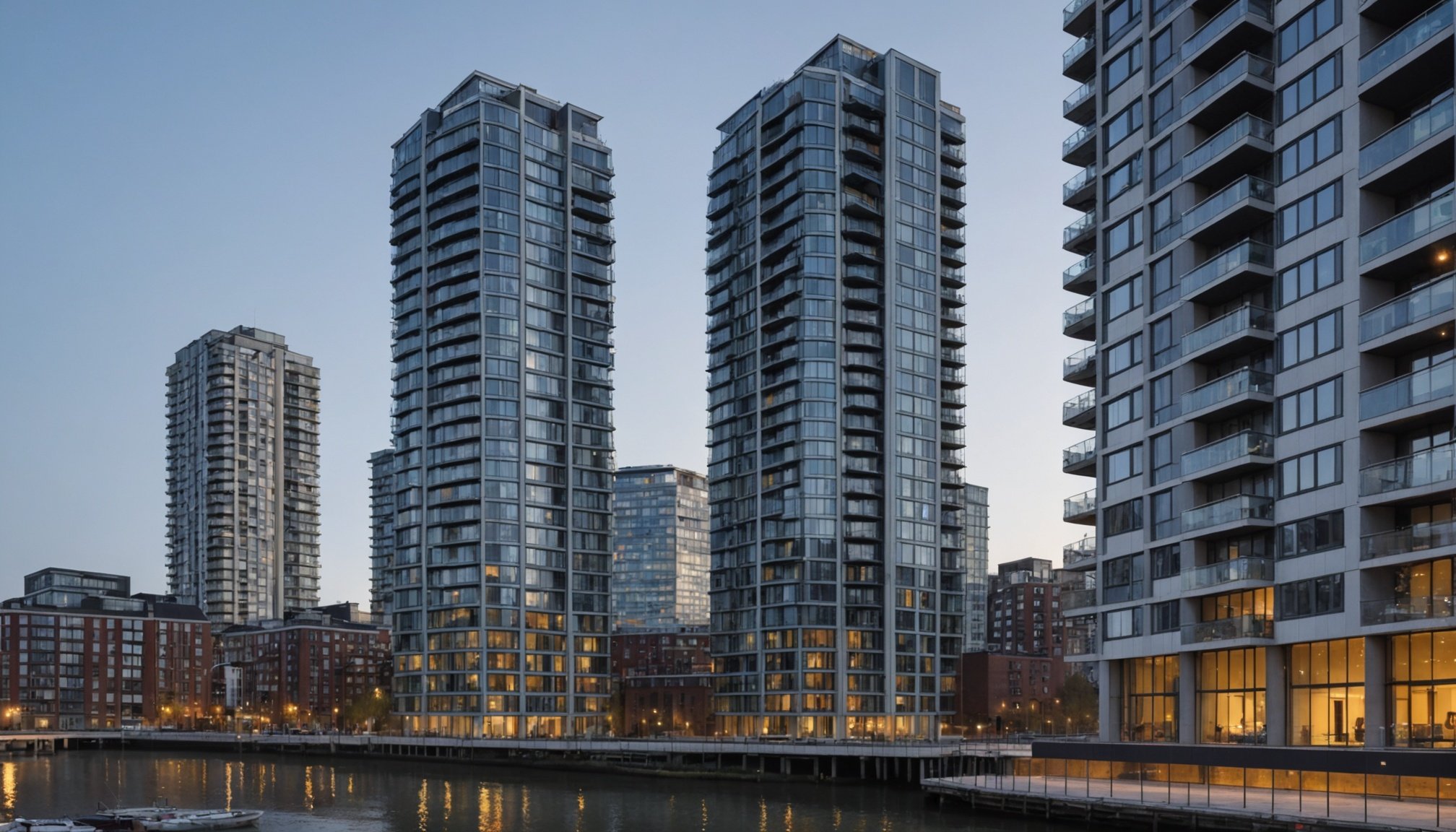UK regulations surrounding high-rise residential building insurance have undergone significant changes in recent years, raising concerns and uncertainties among homeowners and developers alike. Understanding these regulations is essential for anyone involved in the housing sector. This exploration sheds light on how regulatory shifts impact insurance costs, coverage, and risk assessments for high-rise properties. Dive into the implications these rules have, not just for compliance, but also for safeguarding investments and ensuring tenant safety in vertical living spaces.
Overview of UK Regulations on High-Rise Residential Buildings
Navigating UK building regulations for high-rise residential buildings is crucial for both compliance and risk management. These regulations are designed to ensure safety, structural integrity, and energy efficiency. Key regulations impacting high-rise structures include the Building Regulations 2010, which cover various aspects such as fire safety, accessibility, and ventilation. Compliance with these standards is not only a legal requirement but also essential for securing high-rise insurance.
A découvrir également : Top Insurance Solutions for Dual-Use Properties in the UK: Combining Home and Office Coverage
Insurance providers assess compliance with UK building regulations as a significant factor when determining coverage eligibility and premiums. Building owners must ensure that their properties meet all regulatory requirements to avoid increased insurance costs or potential denial of coverage. This highlights the importance of staying updated with legislative changes and maintaining continuous compliance.
Recent changes in legislation, such as the Building Safety Act 2022, have further influenced the insurance landscape. This Act introduces stricter safety measures and accountability for building owners, impacting how high-rise insurance policies are structured. Understanding these changes is vital for both building owners and insurers to adapt to the evolving regulatory environment.
A lire en complément : Mastering the Sale: Navigating Japanese Knotweed When Selling Your UK Home
In summary, adherence to UK building regulations is not only a matter of legal compliance but also a critical factor in securing and maintaining high-rise insurance.
Legal Requirements for Building Safety
Understanding building safety laws is essential for high-rise residential building owners, particularly in the context of fire safety regulations. These regulations are designed to protect residents and property, ensuring that buildings are equipped to prevent, detect, and respond to fires effectively. Compliance with fire safety regulations is a critical component in maintaining insurance coverage and can significantly impact the terms and premiums of insurance policies.
Legal obligations for building owners include regular safety inspections, installing and maintaining fire alarms, and ensuring clear evacuation routes. These measures are not only necessary for resident safety but are also scrutinised by insurance providers when assessing risk and determining coverage eligibility. Failure to comply with these obligations can result in severe consequences, such as increased insurance premiums or even denial of coverage.
Non-compliance with fire safety regulations can lead to financial penalties and increased liability for building owners. Insurance policies may include clauses that void coverage in the event of a fire if it is found that safety regulations were not adhered to. Therefore, it is crucial for building owners to stay informed about current regulations and ensure their properties meet all legal requirements to avoid potential pitfalls.
Implications for Insurance Policies
Understanding how UK regulations impact insurance policies for high-rise buildings is crucial for building owners. These regulations significantly shape the coverage requirements that insurers impose. For instance, adherence to the Building Safety Act 2022 is now a key consideration for insurers when evaluating a building's eligibility for coverage. This Act mandates stricter safety protocols, influencing how insurers assess risk and determine premiums.
Post-regulation changes, the differences in policy offerings have become more pronounced. Insurers now offer tailored policies that reflect the enhanced safety measures required by law. This means that buildings compliant with current regulations may benefit from more favourable terms and potentially lower premiums. Conversely, non-compliance can lead to increased costs or even denial of coverage.
Risk assessment criteria have evolved to align with these regulatory requirements. Insurers now focus on factors such as fire safety compliance, structural integrity, and regular maintenance schedules. These elements are scrutinised to ensure that buildings meet the necessary standards, which directly affects the insurance policies offered. Building owners must therefore stay informed about regulatory changes to ensure their properties meet all coverage requirements, thereby safeguarding their investments and maintaining adequate insurance protection.
Case Studies of Regulatory Impact
Examining regulatory case studies provides insight into how compliance influences insurance claims in high-rise buildings. One notable case involved a high-rise in London, where failure to meet updated fire safety standards resulted in a denied insurance claim after a fire incident. This case underscores the critical importance of adhering to evolving regulations to secure insurance protection.
Another significant case study highlights a building that successfully claimed insurance due to its proactive approach to compliance with the Building Safety Act 2022. By implementing stringent safety measures, the building not only safeguarded its residents but also benefited from favourable insurance terms. This demonstrates that staying ahead of regulatory changes can lead to positive outcomes in insurance claims.
These case studies serve as powerful lessons for building owners and insurers alike. They illustrate the tangible impact of regulatory compliance on insurance practices and claims outcomes. Furthermore, they guide insurers in refining their risk assessment criteria and policy offerings. By learning from these incidents, stakeholders can better navigate the regulatory landscape, ensuring buildings are not only compliant but also adequately insured. This proactive approach is essential for mitigating risks and protecting investments in high-rise residential properties.
Expert Insights on Regulatory Compliance
Navigating the evolving regulatory landscape requires expert opinions to effectively shape compliance strategies. Insurance experts highlight the importance of staying informed about legislative changes, which directly impact insurance underwriting. They emphasize that understanding the nuances of new regulations, such as the Building Safety Act 2022, is crucial for both insurers and building owners.
To ensure compliance, experts recommend adopting proactive strategies. This includes regular audits of building safety measures and maintaining comprehensive documentation of compliance efforts. By doing so, building owners can demonstrate adherence to regulations, which is a key factor in securing favourable insurance terms. Additionally, engaging with regulatory bodies and industry professionals can provide valuable insights and guidance.
Looking ahead, experts anticipate that future trends in insurance policies will be significantly influenced by regulatory changes. Insurers are expected to develop more customised policies that reflect the specific compliance levels of buildings. This could lead to more competitive premiums for compliant buildings and stricter terms for those that lag behind. As the regulatory environment continues to evolve, staying ahead of these trends will be essential for both building owners and insurers to mitigate risks and maintain robust insurance coverage.
Challenges Facing Insurance Providers
Insurance providers in the high-rise residential market face numerous challenges in insurance, primarily due to evolving regulations and market dynamics. One of the key challenges is navigating the frequent regulatory shifts that impact insurance pricing and availability. With the introduction of stricter safety standards, insurers must continually adjust their risk assessment models to align with new legislative requirements. This often leads to increased operational costs as they update their underwriting processes and policy offerings.
The market risks associated with high-rise buildings are another significant hurdle. These risks include potential fire hazards, structural failures, and the complexities of maintaining compliance with ever-changing safety regulations. Insurers must balance these risks while ensuring competitive pricing to attract and retain clients.
To mitigate these challenges, insurance providers are adopting several strategies. They are leveraging advanced technologies, such as data analytics and artificial intelligence, to enhance their risk evaluation capabilities. Additionally, insurers are collaborating with regulatory bodies to stay abreast of legislative changes and incorporate these into their strategic planning. By doing so, they aim to offer more customised and flexible insurance solutions that meet the needs of building owners while maintaining profitability in a challenging market environment.
Future of High-Rise Building Insurance
As the insurance market navigates the complexities of high-rise buildings, understanding future trends is crucial for both insurers and policyholders. Predictions indicate that UK regulations will continue to evolve, potentially introducing even stricter safety standards. This evolution is expected to significantly impact the insurance market outlook, as compliance will become increasingly pivotal.
Insurers are likely to shift their offerings to accommodate these changes. We may see more customised policies that reflect a building's specific compliance level, rewarding those who proactively meet new standards. This shift will not only influence premium pricing but also the availability of coverage options. Buildings that fail to adapt may face limited insurance offerings or higher costs.
For both insurers and policyholders, adapting to these regulatory changes is essential. Insurers must refine their risk assessment models to align with new legislative requirements, ensuring they remain competitive. Policyholders, on the other hand, must stay informed about regulatory shifts to maintain compliance and secure favourable insurance terms. By anticipating these future trends, stakeholders can better navigate the evolving landscape, safeguarding investments and ensuring robust insurance protection.











